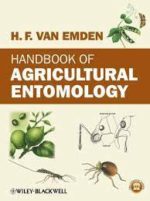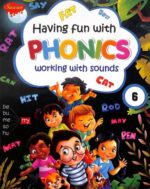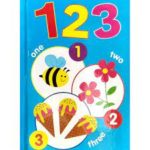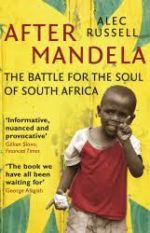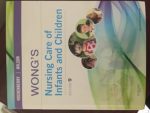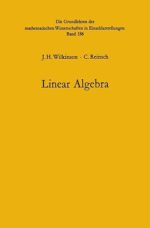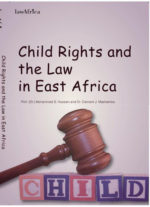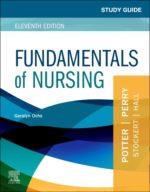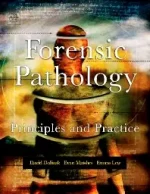-
Handbook of Agricultural Entomology
KSh 16,380.00Handbook of Agricultural Entomology by Helmut van Emden is a landmark publication for students and practitioners of entomology applied to agriculture and horticulture. It can be used as a reference and as a general textbook.
The book opens with a general introduction to entomology and includes coverage of the major insects (and mites) that cause harm to crops, livestock and humans. The important beneficial species are also included. Organisms are described in a classification of insect Orders and Families. The emphasis is on morphological characters of major taxonomic divisions, “spot characters” for the recognition of Families, and the life histories, damage symptoms and economic importance of the various pest species.
The book is beautifully illustrated in full colour with more than 400 figures showing both the organisms and the damage caused to plants with diagnostic characters indicated by arrows. Coverage is world-wide and includes much material stemming from the vast personal experience of the author.
-
Having Fun with Phonics Working with Sounds 6
KSh 695.00Step into the enchanting world of phonics with our “PHONICS BOOKS” series, where learning is an adventure filled with fun and discovery. “Having Fun with Phonics-6” are delightful members of this series, featuring glossy finished covers and secure pin binding to ensure longevity. This book are thoughtfully designed to introduce children to the fascinating realm of phonics, helping them grasp the fundamentals of reading and language. Vibrant illustrations, engaging exercises, and captivating stories make phonics an enjoyable and interactive experience. As children progress through these pages, they will unlock the keys to reading success while having a blast. Parents and educators will appreciate the sturdiness of this book, which can withstand the test of time and eager young readers. “PHONICS BOOKS” are the perfect companions for children’s literacy journey, igniting their passion for reading and language, one page at a time.
-
Early Learning 123
KSh 295.00This book is suitable for younger children to learn their foundation levels on numbers from 1 to 10 with the aid of visual support to make learning interesting.
-
After Mandela: The Battle for the Soul of South Africa-the book we have all been waiting for
KSh 650.00When Nelson Mandela and the African National Congress declared victory over the bitter injustice of apartheid, some thought South Africa’s future was assured. But despite Mandela’s mission of reconciliation, rampant inequality remains; race relations are uneasy, violence is endemic and many in the ANC appear to have lost sight of the liberation ideals. With the election in 2009 of Jacob Zuma, a charismatic populist embroiled in scandal, uncertainty over the trajectory of the nation has only intensified.
South Africa now stands at a crossroads, and award-winning journalist Alec Russell draws on his deep knowledge of the country to tell us how it got there and to give us a compelling account, revised and updated for this edition, of the journey from Mandela to Zuma.
-
Linear Algebra
Linear algebra
The development of the internationally standardized language ALGOL has made it possible to prepare procedures which can be used without modification whenever a computer with an ALGOL translator is available. Volume Ia in this series gave details of the restricted version of ALGOL which is to be employed throughout the Handbook, and volume Ib described its implementation on a computer. Each of the subsequent volumes will be devoted to a presentation of the basic algorithms in some specific areas of numerical analysis. This is the first such volume and it was feIt that the topic Linear Algebra was a natural choice, since the relevant algorithms are perhaps the most widely used in numerical analysis and have the advantage of forming a weil defined dass. The algorithms described here fall into two main categories, associated with the solution of linear systems and the algebraic eigenvalue problem respectively and each set is preceded by an introductory chapter giving a comparative assessment. -
I Have Seen the Promised Land: A Utopian Novella
KSh 395.00This book, a utopian novella set in the year 2026, is part of a trilogy along with The History of the Culture of War and World Peace through the Town Hall: A Strategy for the Global Movement for a Culture of Peace. Together they put forward a comprehensive and feasible plan to achieve world peace. They are based on the author’s responsibility for the United Nations International Year for the Culture of Peace (2000), the Manifesto 2000 signed by 75 million people, and the United Nations Declaration and Programme of Action on a Culture of Peace. This novella foresees the coming collapse of the global economy and nation states as an opportunity to refound the United Nations on the basis of those who understand the need for a culture of peace: individuals, civil society organizations and local governments. It provides an imaginative and personalized account of how the world has come to a culture of peace and explores the various contradictions involved.
-
Child Rights and the Law in East Africa
KSh 2,200.00The book seeks to streamline the rights and protection of children in the three common law East African countries through law both now and in the future. The book also serves as a resource material in the area of child rights and the law, not only in East Africa, but also across Sub-Saharan Africa. It further seeks to stimulate debate on effective domestication and implementation of international child rights standards in East Africa.
-
Study Guide for Fundamentals of Nursing, 11th Edition
KSh 6,700.00Get the most from your fundamentals course with the Study Guide for Fundamentals of Nursing, 10th Edition! Corresponding to the chapters in Fundamentals of Nursing, 10th Edition, this completely updated study guide helps reinforce your understanding of key nursing concepts through review questions, exercises, and learning activities. New question types and brief case studies help you study and prepare for your exams ― at the same time! With the purchase of a new text, bonus online skills checklists walk you through all of the book’s fundamental nursing procedures.
Comprehensive Understanding sections cover the entire chapter in detail, helping you master content.
Multiple-choice review questions evaluate learning of key chapter objectives.
NEW! Brief case studies for every chapter help you apply knowledge you have gained. (These are in addition to the case studies already presented in the text chapters.)
NEW! Alternate question items help you prepare for the kinds of questions you will see on your exams.
NEW! Completely updated Skills Performance Checklists (available on Evolve) match the latest versions of skills.
-
Forensic Pathology Principles and Practice
KSh 60,000.00Forensic Pathology is a comprehensive reference that uses a case-oriented format to address, explain and guide the reader through the varied topics encountered by forensic pathologists. Developed in response to a severe void in the literature, the book addresses topics ranging from medicolegal investigation of death to death scene investigation, forensic autopsy, and artifacts of resuscitation as well as complications of medical therapy, forensic osteology, forensic odontology, forensic photography, and death certification. The book includes various types of cases, including sudden natural death, asphyxia, motor vehicle collisions, death in custody, child abuse and elder abuse, acute psychiatric and emotional deaths, and pregnancy. It contains sample descriptions of pathological lesions which serve to aid pathologists in reporting their findings to law enforcement agencies, attorneys, and others involved in investigations of sudden death. The concepts outlined in the text are beautifully illustrated by large, colorful photographs. There are also “Do and Don’t” sections at the end of each chapter that provide guidance for handling the types of cases examined. This work will benefit not only experienced forensic pathologists, but also hospital pathologists who occasionally performs medicolegal autopsies; doctors in training; medical examiners; law enforcement personnel; crime scene investigators; attorneys; and fellows and students of the medical sciences.

